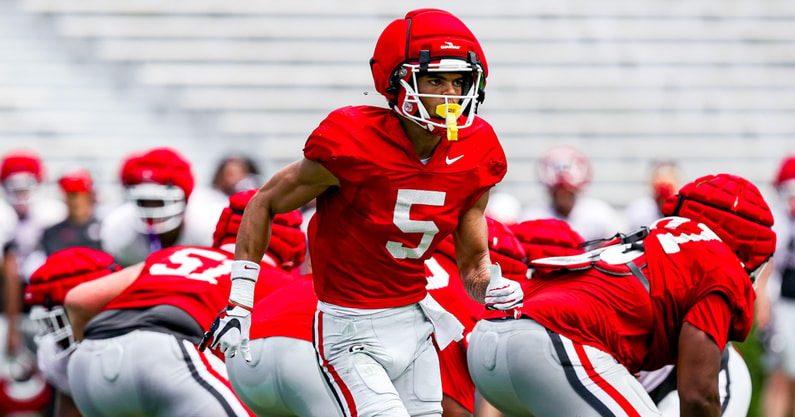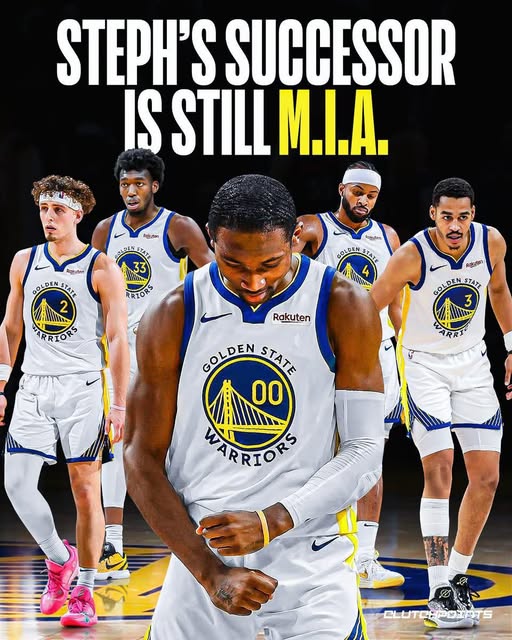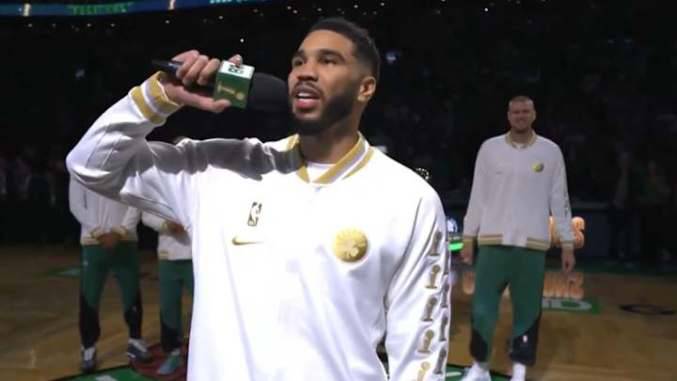GEORGIA BULLDOGS IDENTIFIED AMONG COLLEGE FOOTBALL TEAMS MOST IN NEED OF A TRUE “GO-TO” WIDE RECEIVER HEADING INTO 2025 SEASON
Athens, Georgia — As the countdown to the 2025 college football season accelerates, a familiar narrative has resurfaced in Athens, one that persists despite the Georgia Bulldogs’ unrivaled dominance over the past several years: a glaring need for a true, undisputed “go-to” wide receiver. In a recent national assessment conducted by leading college football analysts, Georgia was named among the top programs most in need of a featured playmaker on the perimeter—an explosive, reliable target capable of stretching defenses, taking over games, and making the difference in playoff-level matchups.
It’s a striking observation given the Bulldogs’ powerhouse status in the sport, but also a reflection of how high expectations have become in Athens under head coach Kirby Smart. For a program that has redefined excellence through back-to-back national championships and a near-constant presence in the College Football Playoff, the margin for error is now razor thin. Championships are won not only through dominant defense and physical line play but increasingly through dynamic, game-breaking athletes at wide receiver—players who tilt the field and command double teams. And while Georgia’s roster is stocked with talent at every level, the absence of a clear No. 1 option on the outside has quietly emerged as a question mark heading into one of the most competitive seasons in recent memory.
Georgia’s recent wide receiver production tells part of the story. Over the past several seasons, the Bulldogs have built their offensive identity around tight ends, a bruising run game, and high-efficiency quarterback play. The likes of Brock Bowers, Darnell Washington, and Ladd McConkey provided reliable production, but often the passing game flowed through the tight ends or a by-committee approach rather than a singular receiver who could dominate coverage the way a Marvin Harrison Jr., Malik Nabers, or Rome Odunze did at other blue-blood programs. The result has been an offense that, while efficient and effective, occasionally lacked that perimeter explosion capable of instantly flipping the field or taking over in moments of crisis.
With Bowers now gone to the NFL and McConkey also moving on, the 2025 season presents both a challenge and an opportunity. Georgia’s wide receiver room is flush with potential, but unproven. Names like Dominic Lovett, Arian Smith, Dillon Bell, and transfer addition Colbie Young bring a variety of skill sets, from vertical burners to possession targets. Yet none has fully emerged as the kind of alpha receiver that defenses must scheme around or who can consistently make contested catches on third down or in the red zone. That’s the kind of weapon Georgia is missing, and it’s the kind of player championship offenses almost always possess.
The importance of having a true WR1 goes beyond highlight-reel catches or gaudy stat lines. It’s about offensive structure. It allows quarterbacks to trust progressions, offensive coordinators to build game plans around key matchups, and complementary weapons to find more space. When a receiver commands attention, the entire field opens up. When they don’t, the offense often has to work harder for every yard.
Georgia offensive coordinator Mike Bobo is well aware of the need. After spending last season finding creative ways to deploy Bowers in space, Bobo now faces the task of identifying who among the current crop of receivers can command that same kind of gravitational pull. While he has publicly praised the group’s depth and versatility, the search for a dominant target is ongoing—and urgent. With a new starting quarterback stepping into the spotlight this fall, establishing a clear chemistry between signal-caller and wideout will be crucial to maintaining offensive rhythm against elite competition.
One player many in Athens hope can fill the void is Lovett, the Missouri transfer entering his second year in the system. He showed flashes in 2024 of being a reliable chain-mover and occasional deep threat, but consistency and route separation against top-tier SEC defenses remained an issue. Arian Smith, meanwhile, remains one of the fastest players in college football, but injuries and inconsistencies have kept him from fully breaking out. Bell has shown flashes as a utility weapon and has been praised for his physicality, but questions remain about whether he can take on a primary receiving load.
Georgia’s incoming freshmen offer promise as well. Among them, five-star prospect Nitro Tuggle has drawn rave reviews for his athleticism and work ethic. Tuggle possesses the raw tools to develop into a top-tier receiver, but relying on a true freshman to carry the offense against the likes of Alabama, LSU, and Texas is a tall order. The same goes for other young receivers like Sacovie White and Ny Carr, who are still learning the complexities of Georgia’s system.
The transfer portal also looms as a potential factor should Georgia decide that none of its current options fit the mold of a true WR1. In recent years, Smart and his staff have not hesitated to dip into the portal to address areas of need, especially when it comes to plugging offensive skill positions with proven Power Five experience. Should Georgia struggle early to identify that featured pass catcher, fans and analysts alike will be watching closely to see if the Bulldogs become players in the next portal window.
But beyond personnel, the issue also raises a broader philosophical question for Georgia’s offense: is it built to produce an elite wide receiver, or has its success come in spite of not having one? Under Smart, Georgia has prided itself on balance, physicality, and efficiency. They don’t chase stats. They don’t force the ball to one player just to appease headlines. That system has worked—and worked brilliantly. Yet, as college football offenses evolve and as playoff defenses become increasingly athletic and versatile, the absence of a WR1 can sometimes become the one missing piece in a tight game.
Last year’s narrow loss to Alabama in the SEC Championship, followed by watching other playoff contenders make downfield plays in critical moments, served as a reminder that sometimes, the best answer to elite coverage is simply having a player who’s better than the man across from him. Georgia’s tight ends have been that answer in recent years. Now, with those safety nets gone, it may be time for a wide receiver to step into that spotlight.
Kirby Smart has addressed the issue in his usual measured tone, emphasizing development and internal competition. “We’ve got guys in that room who can play. It’s about who’s going to take the next step,” Smart said during SEC Media Days. “Every year we ask our leaders to emerge, and that doesn’t just mean captains. It means guys on the field making plays in big moments. That can come from anywhere, and we’re excited about the potential we’ve got at receiver.”
Still, the national spotlight will remain focused on Georgia’s receiver situation as the season unfolds. Every target, every third-down throw, every red zone fade will be scrutinized through the lens of this lingering question: who is the guy? The one who demands the ball when it matters most. The one who converts third-and-8 with a defender draped over his shoulder. The one who hauls in the contested touchdown in the final minute of a playoff game.
Until that question is answered definitively, Georgia will remain one of the few elite programs where the wide receiver room is a source of curiosity rather than certainty. It’s a rare crack in the armor of a program that has otherwise dominated every major category, from recruiting and development to defense and offensive line play.
Of course, for Georgia fans, the hope is that the answer is already on campus—that one of the current Bulldogs is simply waiting for his opportunity to seize the moment. Whether it’s Lovett taking the next step, Bell evolving into a feature threat, or one of the younger players bursting onto the scene, the door is wide open for a new star to emerge.
But until that happens, the narrative persists: Georgia may be kings of college football, but when it comes to the wide receiver position, they are still searching for their next crown jewel. And in a sport increasingly defined by explosive plays and aerial dominance, that search has never been more important.



